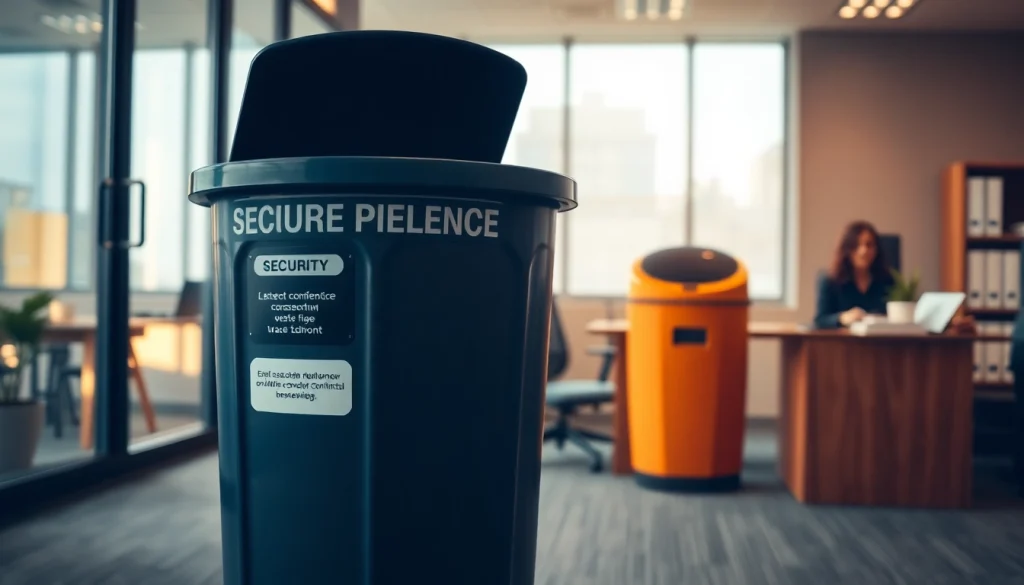
Understanding Confidential Waste Collection
In today’s data-driven world, the proper management of confidential waste is more critical than ever. Businesses are inundated with sensitive information, from financial records and employee data to proprietary research and customer files. Inadequate handling of this waste not only poses a significant risk to privacy and security but can also lead to severe legal repercussions and reputational damage. Effective Confidential Waste Collection and Shredding strategies are essential for organizations of all sizes to mitigate these risks.
What Constitutes Confidential Waste?
Confidential waste refers to any type of discarded material that contains sensitive information that, if disclosed, could pose risks to individuals or organizations. Examples include:
- Personal identification information (e.g., Social Security numbers, driver’s licenses)
- Financial records (e.g., bank statements, credit card information)
- Employee records (e.g., medical records, performance reviews)
- Business information (e.g., trade secrets, strategic plans)
- Customer data (e.g., transaction history, contact information)
Each of these categories requires careful handling and disposal mechanisms to preserve confidentiality and data integrity.
The Importance of Proper Disposal
Proper disposal of confidential waste is vital for several reasons:
- Protection against Identity Theft: Inadequate disposal practices can lead to unauthorized access to sensitive personal information, facilitating identity theft and fraud.
- Compliance with Regulations: Various laws and regulations, such as the General Data Protection Regulation (GDPR) and the Data Protection Act, mandate strict guidelines for handling personal data.
- Reputation Management: A data breach can tarnish an organization’s reputation, leading to loss of customer trust and potential financial penalties.
By implementing robust waste disposal practices, organizations can significantly enhance their overall security posture.
Regulations Surrounding Confidential Waste
Organizations must navigate a complex landscape of regulations that govern the management of confidential waste:
- GDPR: This regulation requires businesses to protect personal data and outline strict measures for data disposal.
- Data Protection Act: It mandates secure processing and disposal of personal data.
- HIPAA (for healthcare organizations): This sets the standards for the protection of sensitive patient information.
Understanding these regulations is crucial for compliance and to avoid severe penalties.
Best Practices in Confidential Waste Collection
Implementing a Secure Disposal Protocol
Establishing a secure disposal protocol is the first step in managing confidential waste effectively. Organizations should:
- Identify: Classify different types of confidential waste within the organization.
- Secure: Utilize locked waste bins for confidential materials to prevent unauthorized access.
- Document: Keep a record of all confidential waste generated to ensure accountability.
Choosing the Right Collection Service
Selection of a reliable waste collection service can significantly impact the effectiveness of your confidential waste management. Factors to consider include:
- Certifications: Ensure the service provider has relevant certifications, such as ISO 9001 or NAID AAA, that reflect their commitment to secure waste management.
- Service Scope: Evaluate whether the service includes both on-site and off-site collection options.
- Data Destruction Methods: Investigate the methods they use for shredding or destroying confidential waste.
Regular Training for Staff on Waste Management
Effective waste management starts from the ground up. Providing regular training to staff ensures everyone understands their role in protecting sensitive information. Key training aspects should include:
- Identification of confidential waste
- Understanding disposal protocols
- Handling procedures for sensitive documents
Empower your employees with the knowledge and tools they need to adhere to best practices in waste management.
Shredding Techniques and Equipment
Overview of Shredding Methods
Shredding is a vital component of the confidential waste management process, and there are various methods utilized in the industry:
- Strip-Cut Shredding: Cuts documents into long strips. It offers the least security.
- Cross-Cut Shredding: Cuts documents into small pieces, providing enhanced security suitable for most confidential documents.
- Micro-Cut Shredding: Produces tiny particles of paper, offering the highest level of security often recommended for highly confidential documents.
Benefits of On-Site vs Off-Site Shredding
Organizations face a choice between on-site and off-site shredding services, each with unique advantages:
On-Site Shredding
On-site shredding allows for immediate destruction of documents at your location, which can provide peace of mind as you can witness the shredding process. However, it may not be as scalable for larger operations.
Off-Site Shredding
Off-site shredding typically involves transporting the material to a secure facility. It can be more cost-effective for organizations with large volumes of waste, but requires a degree of trust regarding security during transport and processing.
Choosing Reliable Shredding Equipment
Whether you opt for in-house shredding or contract a service, selecting reliable shredding equipment is crucial. Key considerations include:
- Shredder Capacity: Assess the volume of documents needing shredding.
- Security Levels: Match the shredder’s capabilities with the level of sensitivity of the information being shredded.
- Durability and Warranty: Look for shredders with good reviews in reliability and a robust warranty.
Cost Considerations for Waste Management
Budgeting for Confidential Waste Collection and Shredding
When budgeting for confidential waste management, organizations must consider several factors:
- Volume of Waste: Higher volumes may lead to bulk discount opportunities.
- Frequency of Collection: Increasing the collection frequency may also increase costs.
- Type of Service: On-site collection may be more expensive than off-site shredding, impacting overall costs.
Comparing Service Providers
When evaluating different waste management services, consider the total cost of ownership rather than just the sticker price of services. Factors might include:
- Level of security and compliance assurance
- Customer reviews and reputation in the industry
- Additional services such as ongoing training, audits, and compliance support
Long-Term Savings Through Efficient Practices
Investing in an efficient confidential waste management strategy can lead to long-term savings:
- Reducing the risk of data breaches can prevent costly penalties and lawsuits.
- Streamlining processes may lower operational costs and time spent on managing waste.
- Improving compliance can lead to lower insurance premiums.
Measuring Effectiveness of Your Waste Strategy
Key Performance Indicators for Waste Management
Establishing performance metrics helps organizations gauge the effectiveness of their confidential waste management strategies. Some important KPIs include:
- Volume of waste collected vs. expected
- Frequency of security incidents related to waste disposal
- Employee compliance rates with disposal protocols
Feedback Mechanisms for Continuous Improvement
Implementing feedback mechanisms ensures continuous improvement in waste management practices. Encourage open communication channels with staff and stakeholders to gather insights and address concerns. Strategies might include:
- Regular surveys to gauge employee perceptions of waste management effectiveness
- Conducting audits to monitor compliance with policies
- Facilitating workshops for sharing best practices and addressing challenges
Case Studies: Businesses That Excel in Waste Management
Learning from other organizations that have effectively implemented waste management practices can provide valuable insights. Case studies could highlight:
- Successful companies that have reduced costs through efficient waste management
- Organizations that have experienced a drop in data breaches due to reliable disposal practices
- Examples of innovative technologies used in waste management
By analyzing these cases, businesses can adopt strategies that align with their own objectives and compliance requirements.






